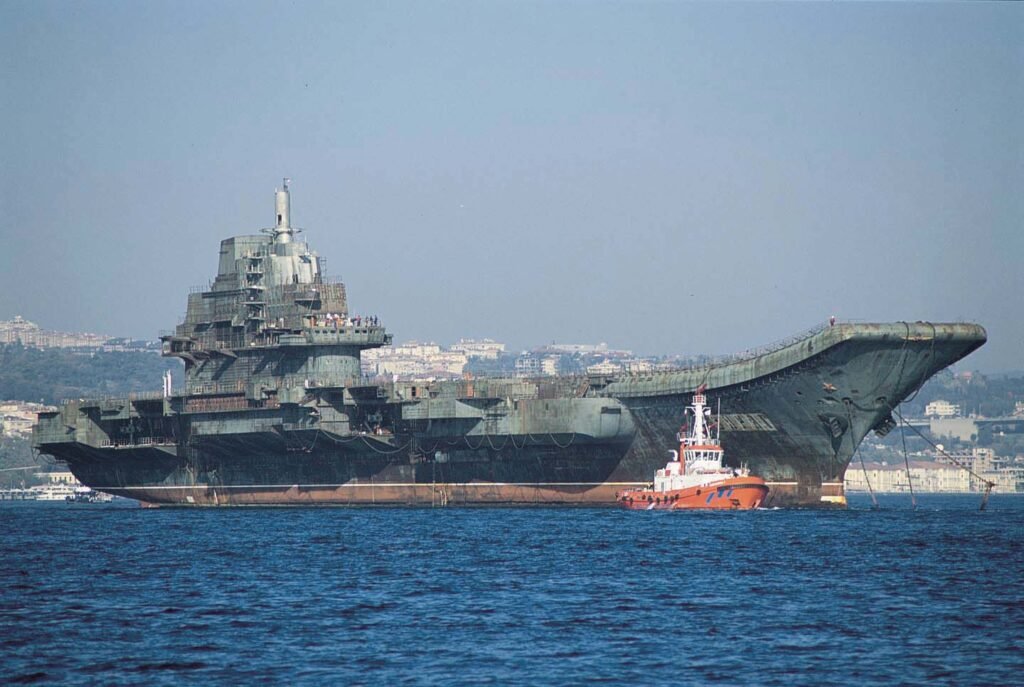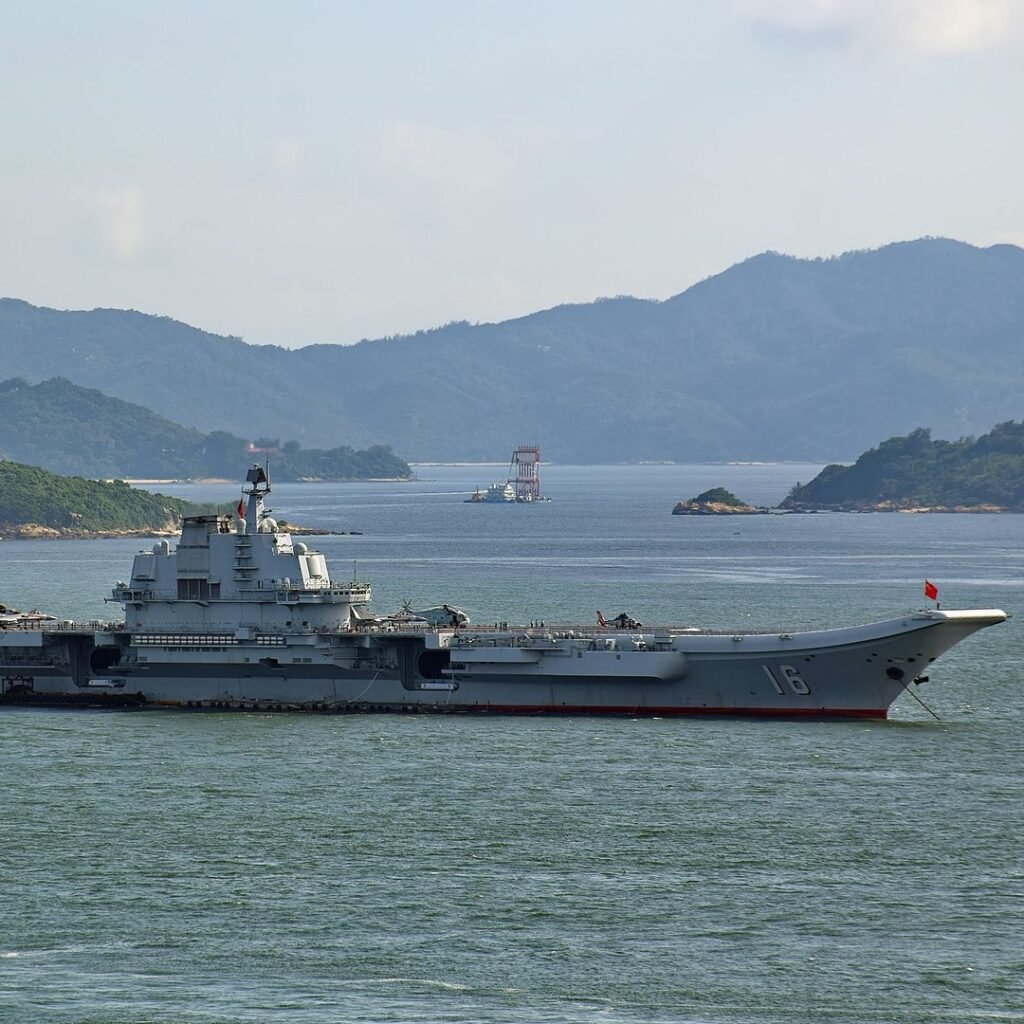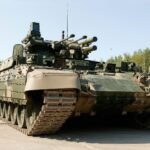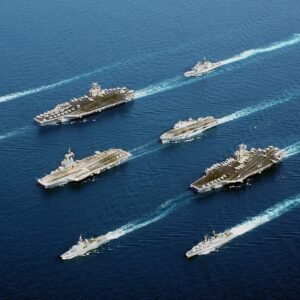Origin
CV 16 Liaoning is a Chinese aircraft carrier that was originally built for the Soviet Union. The carrier was laid down in 1985 at the Nikolayev South shipyard in Ukraine, which was then part of the Soviet Union. The carrier was originally named Riga after a city in Latvia, but it was later renamed Varyag after a famous Russian cruiser. However, due to the collapse of the Soviet Union in 1991, the carrier was left unfinished and was eventually sold to China in 1998. The Chinese government purchased the carrier from a Ukrainian company, reportedly for $20 million, and towed it to China for refurbishment and modernization.

Design & Development of CV 16 Liaoning
After purchasing the carrier, China started an extensive renovation and modernization process that lasted for more than a decade. The carrier was completely refurbished and modernized with Chinese-made technology and equipment. The carrier’s flight deck was extended, and a ski-jump ramp was added to facilitate the takeoff of fighter aircraft. The carrier’s propulsion system was also upgraded, and a new power plant was installed.
China began work on the carrier in the late 1990s, but progress was slow due to a lack of experience and technical difficulties. The country faced several challenges in modernizing the carrier. Including the need to develop new technologies and integrate foreign systems with Chinese-made ones.
The carrier underwent sea trials in 2011, and it was commissioned into the People’s Liberation Army Navy (PLAN) in 2012. Becoming the first aircraft carrier in the Chinese Navy’s history. The carrier was named Liaoning after the northeastern province where it was refitted.
Since then, the carrier has undergone several upgrades and modernizations. In 2016, it underwent a major upgrade, which included the installation of a new combat system and an improved radar system. In 2019, the carrier was spotted with a new phased array radar system and a modified ski-jump ramp. These upgrades are part of China’s ongoing efforts to modernize its military and enhance its naval capabilities.

General Specification of The CV 16 Liaoning Aircraft Carrier
| Specification | Details |
| Displacement | 66,000 tons (standard); 80,000 tons (full) |
| Length | 304.5 meters |
| Beam | 75 meters |
| Draught | 9.3 meters |
| Powerplant | 8 x boilers; 4 x steam turbines; 4 x shafts |
| Propulsion | Conventional; steam turbines |
| Speed | 31 knots (maximum) |
| Range | 3,850 nautical miles (at 18 knots) |
| Endurance | 45 days |
| Complement | 1,960 crew members |
| Aircraft capacity | Up to 44 aircraft |
| Aviation facilities | Ski-jump takeoff ramp; 2 x aircraft elevators |
| Armament | 3 x Type 1130 CIWS guns; 3 x Type 052C SAMs |
| Sensors and systems | Air search radar; surface search radar |
| Communication systems | SATCOM; VHF/UHF; HF |
| Electronic warfare systems | ECM; ESM; decoy systems |
CV 16 Liaoning Avionics & Armaments
CV 16 Liaoning is equipped with advanced avionics and armaments that enable it to carry out a range of missions, including air defense, anti-submarine warfare, and maritime security.
Avionics:
The carrier’s air defense system includes the Type 346A multifunction phased array radar, which provides long-range surveillance and target tracking capabilities. It is also equipped with the Type 518 L-band air search radar and the Type 364 surface search radar. The carrier also has a range of electronic warfare equipment, including the Type 922-1 radar warning receiver and the Type 726-4 decoy launcher system.
Armaments:
CV 16 Liaoning has a wide range of armaments that can be used to defend itself and project power. The carrier is equipped with a close-in weapon system (CIWS) for close-range defense against incoming threats. The CIWS includes the Type 1130 Gatling gun, which can fire up to 10,000 rounds per minute, and the Type 730B seven-barrel 30mm Gatling gun.
In addition, the carrier is armed with anti-ship missiles, including the YJ-83 and YJ-62 missiles, which have a range of up to 400 km and 400 nautical miles, respectively. The carrier also has a range of anti-submarine warfare weapons, including torpedoes and depth charges.
The carrier’s air wing is made up of a mix of fixed-wing aircraft and helicopters. The fixed-wing aircraft include the J-15 fighter jet, which is a Chinese-made carrier-based fighter that is based on the Russian Su-33. The carrier also has a range of helicopters, including the Z-18 utility helicopter and the Z-9 anti-submarine warfare helicopter.

CV 16 Liaoning Aircraft Carrier Upgrades and Testing
Since its commissioning in 2012, CV 16 Liaoning has undergone several upgrades and testing to improve its capabilities and enhance its operational effectiveness. Here are some of the notable upgrades and testing that the carrier has undergone in recent years:
- In 2016, the carrier underwent a major upgrade, which included the installation of a new combat system and an improved radar system. The upgrade also included the installation of new communication systems, navigation equipment, and power systems. The upgrade was aimed at enhancing the carrier’s operational capabilities and improving its survivability in combat.
- In 2018, the carrier underwent a series of sea trials in the South China Sea to test its new equipment and systems. The trials included testing the carrier’s radar and communication systems, as well as its air defense capabilities. The carrier also conducted flight operations with its J-15 fighter jets and helicopters.
- In 2019, the carrier was spotted with a new phased array radar system and a modified ski-jump ramp. The new radar system is expected to improve the carrier’s surveillance and targeting capabilities, while the modified ski-jump ramp is designed to improve the carrier’s ability to launch its J-15 fighter jets.
- In 2020, the carrier conducted a series of exercises in the Bohai Sea to test its combat readiness and operational capabilities. The exercises included flight operations with its J-15 fighter jets and helicopters, as well as anti-submarine warfare drills and live-fire exercises.
- In 2021, the carrier was spotted conducting exercises in the South China Sea, which included flight operations with its J-15 fighter jets and helicopter gunships. The carrier also conducted anti-submarine warfare drills and air defense exercises.

Aircraft Carrier Fleet
CV 16 Liaoning is often accompanied by a range of supporting carrier strike ships, which help to enhance its operational capabilities and provide protection against potential threats. Here are some in-depth details about the supporting ships that are typically deployed alongside CV 16 Liaoning:
- Type 055 Destroyers – These are the newest and most advanced destroyers in the Chinese Navy’s fleet. They are equipped with advanced radar systems, anti-ship missiles, and air defense systems. These destroyers provide long-range air defense and missile defense for the carrier group, and can also be used for anti-submarine warfare and surface warfare.
- Type 052D Destroyers – These are also advanced destroyers that are equipped with advanced radar systems, anti-ship missiles, and air defense systems. They are smaller than the Type 055 destroyers but are still highly capable and can be used for a range of missions, including air defense and anti-submarine warfare.
- Type 054A Frigates – These are multi-purpose frigates that are equipped with anti-ship missiles, air defense systems, and anti-submarine warfare capabilities. They are often used to protect the carrier group from enemy submarines and surface ships.
- Type 901 Replenishment Ships – These are supply ships that are used to resupply the carrier group with fuel, food, and other essential supplies. They are also equipped with anti-aircraft guns for self-defense.
- Type 903A Auxiliary Ships – These are auxiliary ships that are used to provide logistical support to the carrier group. They can carry additional supplies, equipment, and personnel, and can also be used for medical support.

Aircraft Carrier Carries
CV 16 Liaoning primarily relies on its own aircraft to provide support for its operations, which include the J-15 fighter jets and various types of helicopters. Here are some in-depth details about the aircraft that are typically deployed on CV 16 Liaoning:
- J-15 Fighter Jets – The J-15 is a multi-role fighter jet that is specifically designed for carrier-based operations. It is equipped with air-to-air missiles, anti-ship missiles, and other weapons systems, and can be used for a range of missions, including air defense, strike missions, and reconnaissance.
- Z-18F Helicopters – The Z-18F is a utility helicopter that is used primarily for anti-submarine warfare and search-and-rescue missions. It is equipped with a dipping sonar, torpedoes, and other anti-submarine warfare systems.
- Z-18J Helicopters – The Z-18J is a transport helicopter that is used for logistical support and troop transport. It can also be used for medical evacuation and other support missions.
- Z-9C Helicopters – The Z-9C is a utility helicopter that is used for a range of missions, including search-and-rescue, reconnaissance, and transport. It can also be used for anti-submarine warfare and anti-surface warfare missions.
Read More:-Top 5 Aircraft Carriers in 2023.







